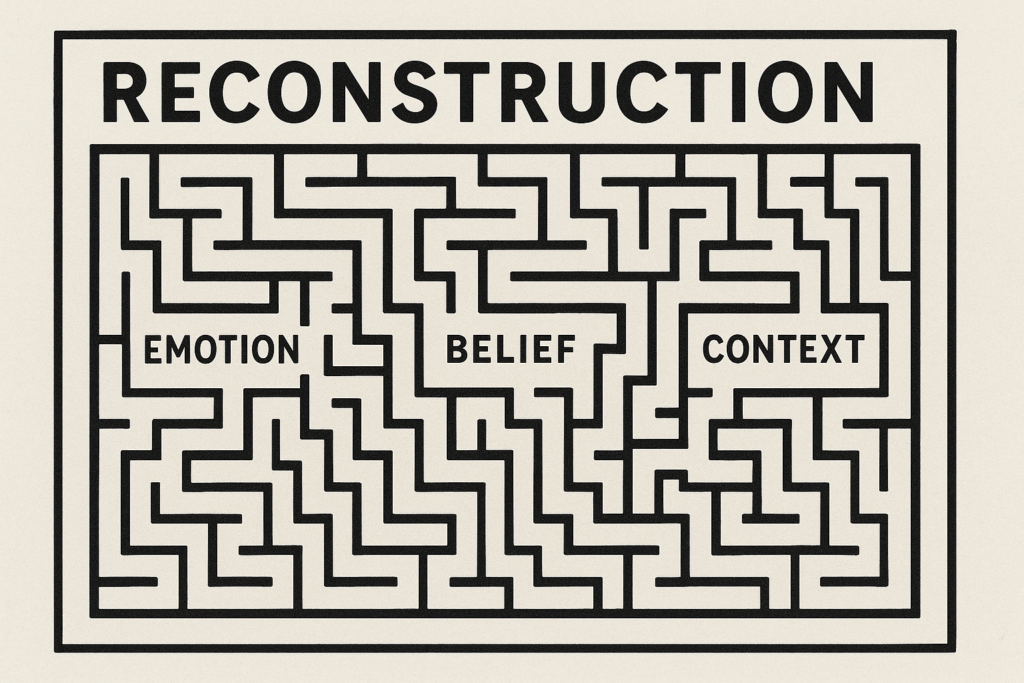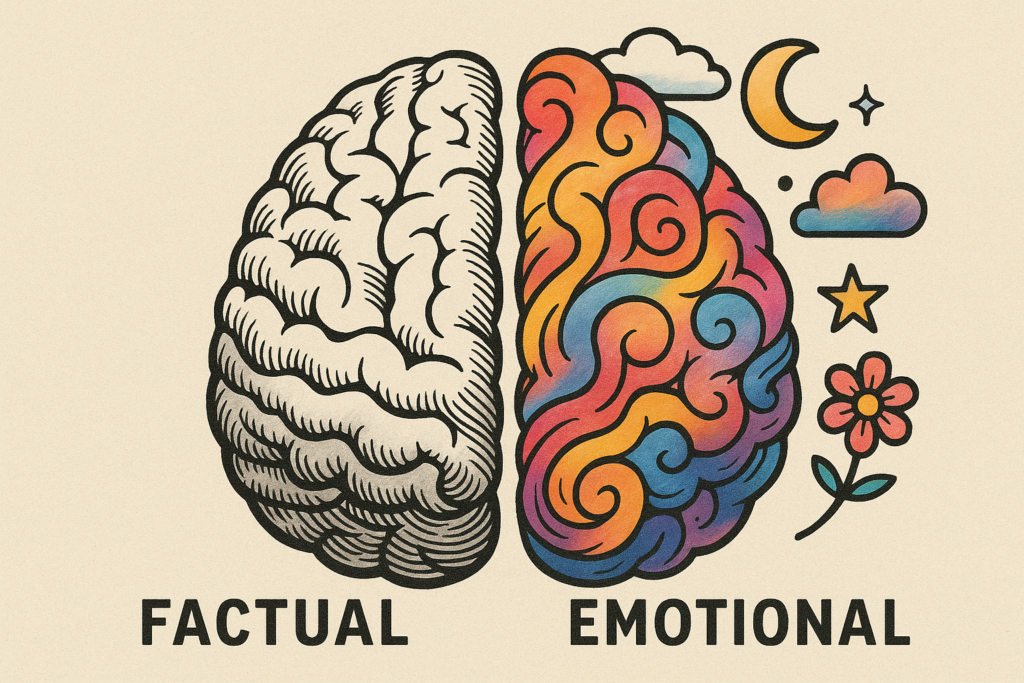Fun fact: Every time you remember something, your brain edits it—just a little.
We like to think of our memories as recordings. A mental archive of what really happened. But neuroscience paints a very different picture. “Your Memory Is a Story, Not a File: How Brains Rewrite the Past” isn’t just a poetic metaphor—it’s a cognitive truth backed by brain scans, psychological experiments, and decades of research.
Your memory isn’t a dusty file cabinet. It’s a live document. A constantly revised story shaped by your emotions, beliefs, and the version of yourself who’s remembering. And here’s the kicker: the more often you recall a memory, the less accurate it becomes.
Let’s explore how and why your brain rewrites the past—and what this means for your identity, relationships, and even your sense of truth.
Memory Isn’t a Recording—It’s a Reconstruction
When you remember your 10th birthday or a breakup or a street you once walked down in Delhi, you’re not playing back a video. You’re recreating the scene using fragments—smells, feelings, faces, places—and filling in the gaps with your imagination.
This process is called reconstructive memory. It means your brain rebuilds the memory every time, influenced by what’s happened since.
Scientists compare this to editing a Google Doc instead of opening a PDF. The file is dynamic. Every time you access it, you may tweak it—consciously or not.
Your Brain Is a Creative Editor
So, how does the brain “edit” memories?
Every time you recall something, the memory enters a labile state, where it becomes temporarily unstable. During this window, it’s vulnerable to updates, distortions, or even deletion.
After you think about it, your brain “re-saves” it with the new tweaks.
This process is known as memory reconsolidation, and it’s been observed in fMRI (functional Magnetic Resonance Imaging) studies. The same neural circuits that helped form the memory in the first place are activated again—this time with updates.
It’s like opening an old photo album and scribbling in a few new details every time you flip through it.

The Mandela Effect: False Memories, Collective Style
Ever remember something wrong—and swear it was true?
Welcome to the Mandela Effect—a phenomenon where large groups of people misremember the same event. It’s named after Nelson Mandela, whom many falsely believed died in prison in the 1980s.
Other examples include:
- The Monopoly man never had a monocle.
- “Luke, I am your father” is not the actual Star Wars quote.
- The “Berenstain Bears” is spelt with an a, not an e.
These false memories are not just glitches. They show how cultural reinforcement, suggestion, and the brain’s love for pattern-matching can fabricate entire details.
Case Study: Eyewitness Testimony
Memory’s fallibility has real-world consequences—especially in courts.
Psychologist Elizabeth Loftus has spent decades proving that eyewitness memories can be manipulated. In one famous experiment, participants watched a car crash video. Those asked, “How fast were the cars going when they smashed?” gave much higher speed estimates than those asked when they hit.
The implication? Even the wording of a question can change your memory. This has led to wrongful convictions, overturned cases, and a rethinking of how memory is treated in the justice system.
Emotion Is the Co-Author of Memory
Our memories aren’t just stories—we tell them with a mood.
The more emotional the experience, the more vivid the memory. But here’s the twist: high emotion doesn’t equal high accuracy.
In fact, trauma can lead to distorted or fragmented memories. Conversely, nostalgia can romanticise the past. A boring afternoon spent with friends may become golden in retrospect—because you miss them now.
Memory is not about facts. It’s about meaning.
The Self-Memory Feedback Loop
Here’s where it gets deeply personal.
Your brain edits memories not just based on facts, but based on who you are now. Your current beliefs, values, and emotional state shape how you remember the past.
For example:
- If you now see yourself as resilient, your memory of a tough time may focus on strength, not suffering.
- If you feel guilty about something, your brain might exaggerate your role in a conflict.
- If you’re in love, your memory of your first meeting may feel more magical than it actually was.
This creates a self-memory feedback loop—you remember things based on who you are, and those memories reinforce that identity.

Nostalgia: Selective Memory at Work
Why do “the good old days” always seem better?
Because nostalgia is a curated experience. Your brain selects warm, pleasant memories and edits out the boredom, discomfort, or awkwardness.
This isn’t dishonest. It’s survival. Nostalgia provides comfort, continuity, and a sense of identity during times of change.
That old bicycle ride, that evening on the terrace, that school farewell—they live on, not as they were, but as they felt. And maybe that’s enough.
Can You Trust Your Memory?
The short answer? Sometimes.
Memory isn’t worthless—it’s just human. It’s beautifully flawed, like a well-worn diary or a story passed down through generations.
You can trust your memory to tell you how something mattered. But not necessarily what exactly happened.
This has implications beyond therapy or legal trials. It affects relationships, conflict, nostalgia, even how you interpret news and identity.
When Memory Helps—and When It Hurts
Memory isn’t just about the past. It helps you plan, imagine, and make decisions. But distorted memory can trap you:
- In cycles of regret or shame
- In unresolved conflict
- In inaccurate beliefs about yourself or others
That’s why therapies like Cognitive Behavioural Therapy (CBT) and Eye Movement Desensitisation and Reprocessing (EMDR) work—they help reprocess and update painful memories, not erase them.
In other words, you can’t rewrite the past—but you can revise how you hold it.
Conclusion: Your Memory Is a Story—and You’re the Author
We live in a world obsessed with “proof”—photos, files, recordings. But the most powerful truths live in our memories. And those memories are not records. They’re stories. Sometimes blurry, sometimes biased, always evolving.
This isn’t a flaw. It’s freedom.
Your brain rewrites the past not to lie to you, but to help you grow, adapt, and find meaning. So be gentle with your memories. Question them when needed. Rewrite them when healing requires it.
Because in the end, your life isn’t what happened—it’s the story you continue to tell yourself.
Author’s Note
Memory isn’t static—it’s living, breathing, and deeply human. It shapes us, but we also shape it. Understanding this gives us power—not just to remember, but to reflect, to grow, and to forgive.
G.C., Ecosociosphere contributor.
References and Further Reading
- The Memory Illusion by Julia Shaw
- American Psychological Association: Memory and Eyewitness Testimony
- How do Core Memories Shape Our Personalities? – THE LION. http://www.thelionstpauls.net/commentary-posts-hidden/how-do-core-memories-shape-our-personalities




